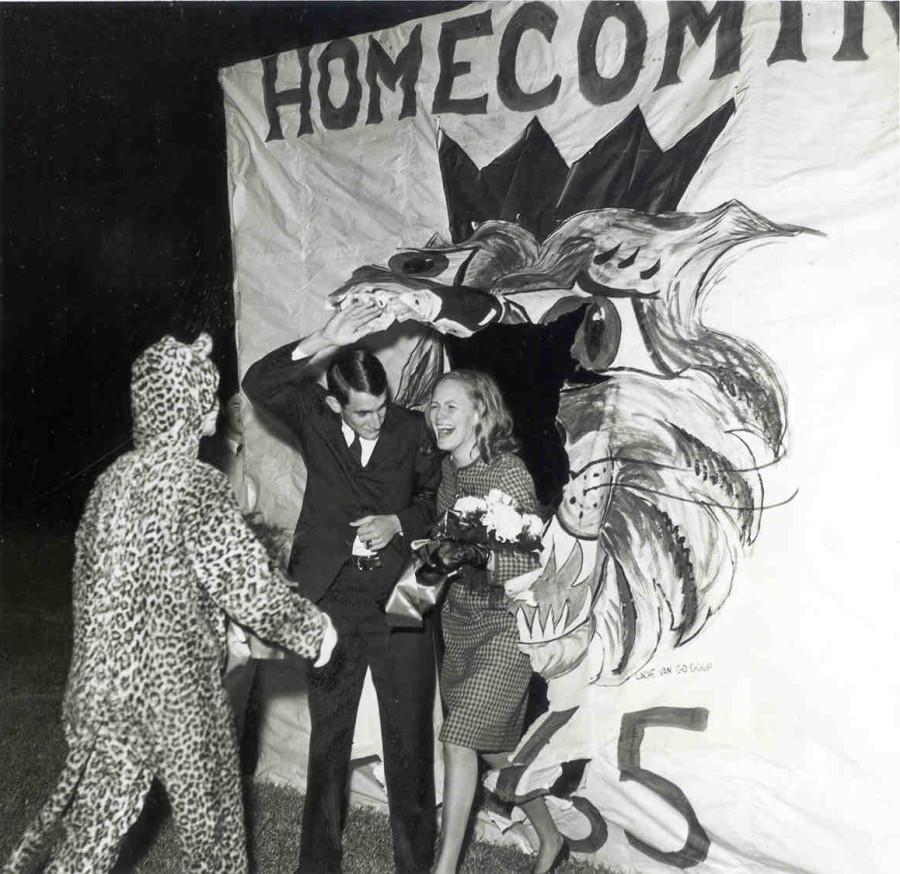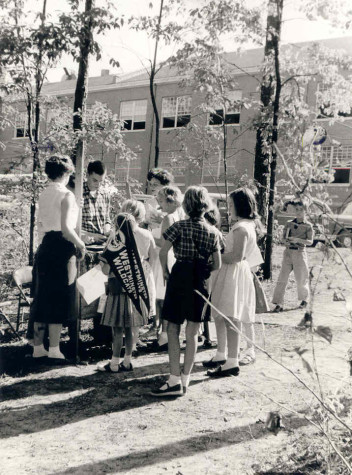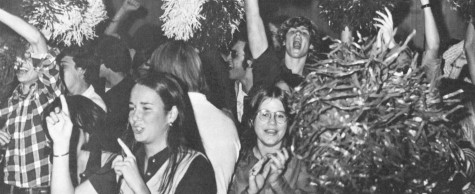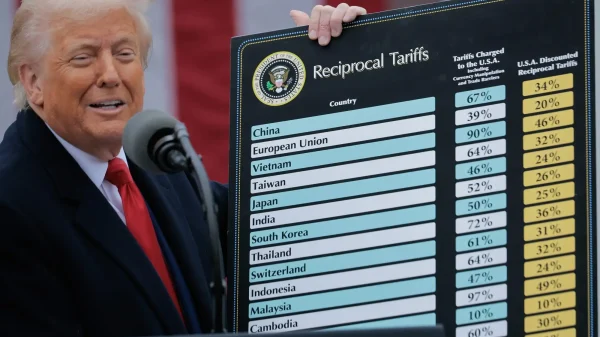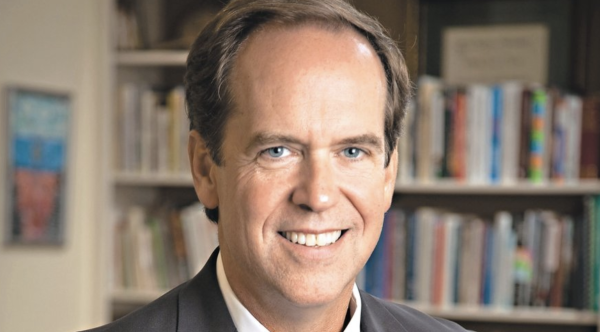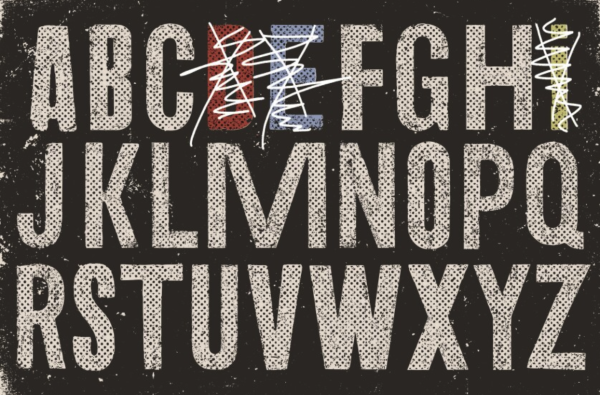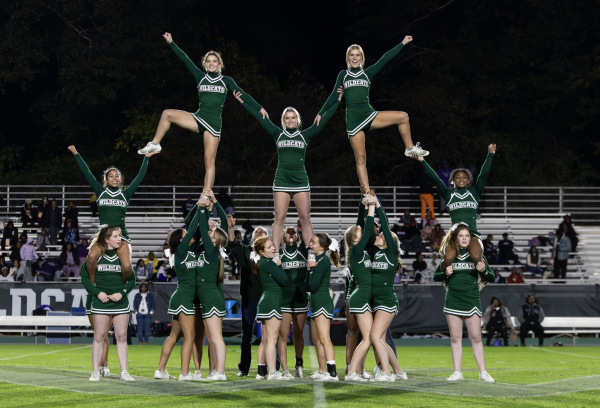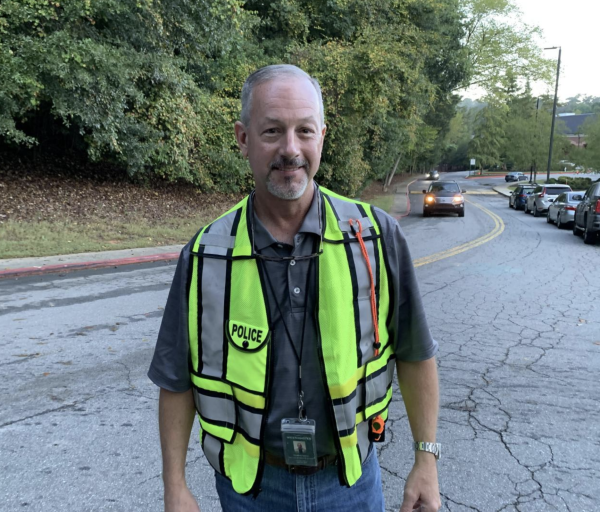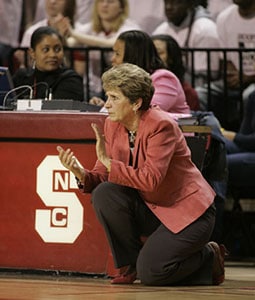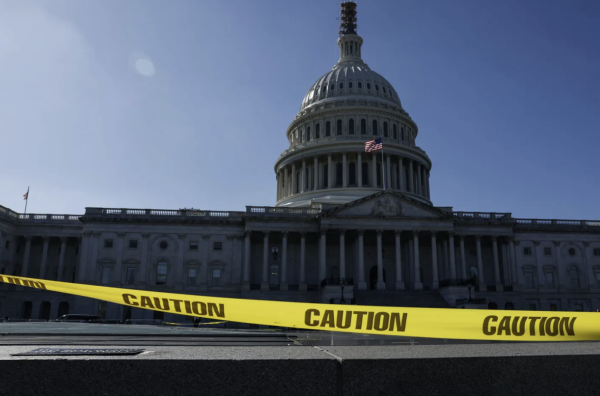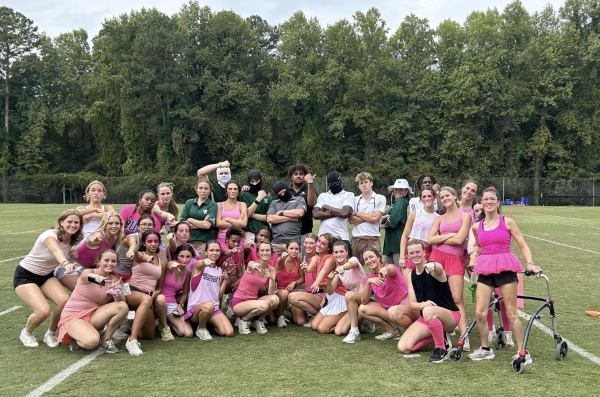Homecoming: From the “rat week” to the present
This year, the Westminster homecoming dance will be held on Thursday, Oct. 23 on Love Patio. Throughout the week, Upper School students will dress up in various fun themes including Atlanta sports teams, USA pride, and the holidays. Festivities used to be very different, however.
“There was a time when it was more time consuming, fancier, and more elaborate,” said English teacher Frank Finsthwait.
Back then, all the nominees for queen drove up with their escorts in white convertibles, often Boomershine Pontiacs, and were given seats of honor at the 50-yard line. They would then ride around the field in a Thunderbird, or in later years, a Model A Ford. Also, instead of a school-wide vote, the varsity football players chose which member of the homecoming court went home with the crown.
During halftime, the three squads of cheerleaders used torches to make a large “W” on the field and the chorale sang the Alma Mater of Westminster. The queen would then be announced. The school’s first homecoming queen was Polly Orr, but she was unaccompanied by a king, who would not be part of the tradition for years to come. However, not much has changed in terms of the court itself except for the custom of the previous year’s queen coming back to crown the new queen.
Homecoming week was dubbed “rat week,” where the “rats,” also known as the eighth grade boys, were all appointed to a senior boy who was allowed to order them around all week long. The eighth graders were then forced to walk in a parade around school in outfits chosen by their seniors, and the students with the best outfits won kisses from the homecoming court.
Also, in a similar fashion to today, competition between the grades was a major part of the festivities.
“It used to be that they awarded points throughout the year and the class that won the most points got recognized at honors day,” said history teacher David Drake. “They don’t do that anymore. Homecoming was part of that. You had the dress ups, the skits, and the cheers. All of that would be rated in terms of points along with the decorations. It took more time, and people don’t have as much time now.”
During the early years of Westminster homecoming, each grade made a float and was judged on it.
“We used to do floats. That was a major class project,” Finsthwait said. “They were part of a display and then they pulled them around the track at halftime.”
By 1977, the contest changed to allow each class to choose their own homecoming theme.
“The week began with lapel day,” wrote student reporter Trudy Minnear. “Wednesday was designated color day and Friday was the judging of hall decorations.”
On the Thursday night before homecoming, the student body hosted a huge bonfire and barbecue to get excited for the upcoming game. Additionally, students would participate in the hanging and burning of dummies symbolizing members of the opposing team.
As the tradition evolved, students started to perform skits and songs at the pep rallies, which were held outside on the bleachers on the day of the game. During the 1958 homecoming celebrations, the junior class drove around the Northside area in a “motorcade,” complete with horn blowing, yelling, and streamers.
The football game would start in the afternoon and would lead up to the dance later that night. Once there, the homecoming court would dance the waltz in front of all the other students at the dance. Then, students would “jitterbug” and listen to slow jazz and rock and roll.
“They would check to make sure you were six inches apart,” said Finsthwait.
In those days, people would bring dates and the attire for the dance was much more formal.
“That changed probably in the late nineties and has evolved into what it is today,” said Finsthwait.
Also, the high school had at least five dances a year, including a junior-senior dance and one to honor the first football game of the season. The festivities would usually end close to midnight and were often quite chaotic. For example, it was reported in the school newspaper that at the 1958 homecoming dance, “Atlanta Police Force kept a close watch on the woods and parking lots, preventing many unexcused absences from the dance.”
Drake, who has worked at Westminster since 1968, has had many years of both attending and chaperoning homecoming and has seen how the progression of homecoming over almost 50 years.
“The problem was when the offenses in football changed to a lot of passing the games wouldn’t get over until 10:30 or 10:45 and by the time the football players got to the dance, it would be 11:15 to 11:30,” said Drake. “Since the dance ended at twelve there wasn’t much homecoming dance-wise. As a result they went to this Thursday dance and Friday homecoming.”
Thus, the traditions and festivities surrounding homecoming have experienced much change since 1954. The celebrations have gone from building floats and motorcading to dressing up and holding pep rallies, from a formal waltz to a casual dance accompanied by Dance Dance Revolution. All the while, however, homecoming has remained an integral part of Westminster’s tradition.
“It’s basically gone from much more formal to more informal year to year to year, just as the world has,” said Finsthwait.
